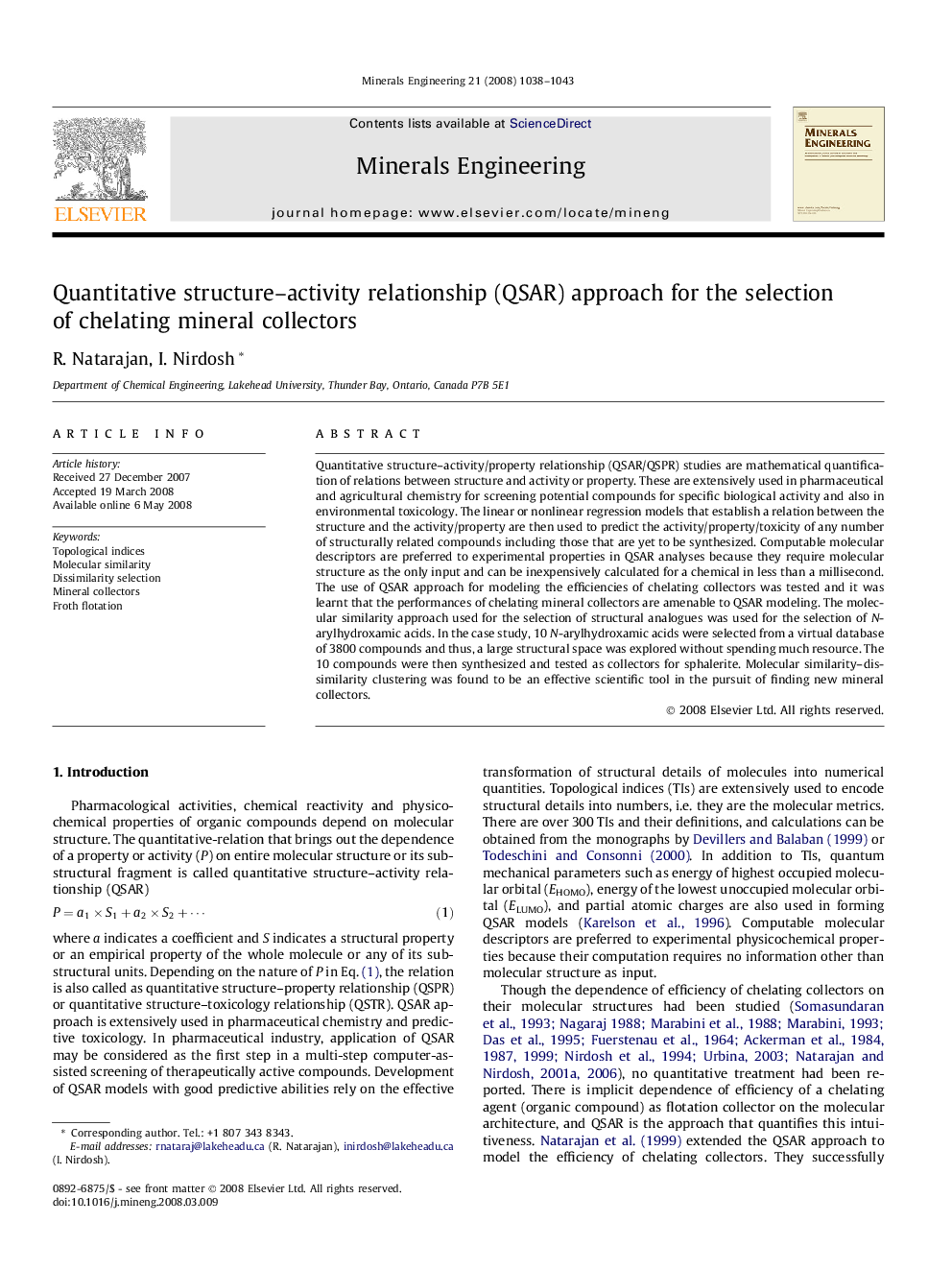| Article ID | Journal | Published Year | Pages | File Type |
|---|---|---|---|---|
| 234628 | Minerals Engineering | 2008 | 6 Pages |
Quantitative structure–activity/property relationship (QSAR/QSPR) studies are mathematical quantification of relations between structure and activity or property. These are extensively used in pharmaceutical and agricultural chemistry for screening potential compounds for specific biological activity and also in environmental toxicology. The linear or nonlinear regression models that establish a relation between the structure and the activity/property are then used to predict the activity/property/toxicity of any number of structurally related compounds including those that are yet to be synthesized. Computable molecular descriptors are preferred to experimental properties in QSAR analyses because they require molecular structure as the only input and can be inexpensively calculated for a chemical in less than a millisecond. The use of QSAR approach for modeling the efficiencies of chelating collectors was tested and it was learnt that the performances of chelating mineral collectors are amenable to QSAR modeling. The molecular similarity approach used for the selection of structural analogues was used for the selection of N-arylhydroxamic acids. In the case study, 10 N-arylhydroxamic acids were selected from a virtual database of 3800 compounds and thus, a large structural space was explored without spending much resource. The 10 compounds were then synthesized and tested as collectors for sphalerite. Molecular similarity–dissimilarity clustering was found to be an effective scientific tool in the pursuit of finding new mineral collectors.
